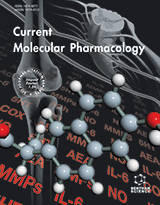Abstract
The cellular genome is constantly subject to DNA damage caused by endogenous factors or exogenously by damaging agents such as ionizing radiation or various anticancer agents. The base excision repair (BER) enzyme, DNA polymerase β, and the polymerases involved in translesion synthesis (TLS) have been shown to contribute to cellular tolerance and repair of DNA lesions by anticancer treatments, particularly the platinum cytotoxic drugs. Moreover, there is robust preclinical evidence linking alterations in DNA pol β and TLS polymerase levels to cancer. DNA polymerases may therefore be potential targets to increase the sensitivity of cancer cells to chemotherapy drugs. In this article, the physical and chemical properties of DNA polymerase β and the translesion synthesis polymerases are reviewed with a view to identifying how they may act as targets for anticancer treatment. The potential clinical role of new DNA polymerase inhibitors is discussed and how they may be combined with conventional cytotoxic agents.
Keywords: Base excision repair, cisplatin, DNA damage repair, DNA polymerase, oxaliplatin, radiotherapy, translesion synthesis
Current Molecular Pharmacology
Title: Biological Relevance of DNA Polymerase Beta and Translesion Synthesis Polymerases to Cancer and its Treatment
Volume: 5
Author(s): Nils H. Nicolay, Thomas Helleday and Ricky A. Sharma
Affiliation:
Keywords: Base excision repair, cisplatin, DNA damage repair, DNA polymerase, oxaliplatin, radiotherapy, translesion synthesis
Abstract: The cellular genome is constantly subject to DNA damage caused by endogenous factors or exogenously by damaging agents such as ionizing radiation or various anticancer agents. The base excision repair (BER) enzyme, DNA polymerase β, and the polymerases involved in translesion synthesis (TLS) have been shown to contribute to cellular tolerance and repair of DNA lesions by anticancer treatments, particularly the platinum cytotoxic drugs. Moreover, there is robust preclinical evidence linking alterations in DNA pol β and TLS polymerase levels to cancer. DNA polymerases may therefore be potential targets to increase the sensitivity of cancer cells to chemotherapy drugs. In this article, the physical and chemical properties of DNA polymerase β and the translesion synthesis polymerases are reviewed with a view to identifying how they may act as targets for anticancer treatment. The potential clinical role of new DNA polymerase inhibitors is discussed and how they may be combined with conventional cytotoxic agents.
Export Options
About this article
Cite this article as:
H. Nicolay Nils, Helleday Thomas and A. Sharma Ricky, Biological Relevance of DNA Polymerase Beta and Translesion Synthesis Polymerases to Cancer and its Treatment, Current Molecular Pharmacology 2012; 5 (1) . https://dx.doi.org/10.2174/1874467211205010054
| DOI https://dx.doi.org/10.2174/1874467211205010054 |
Print ISSN 1874-4672 |
| Publisher Name Bentham Science Publisher |
Online ISSN 1874-4702 |
 51
51
- Author Guidelines
- Bentham Author Support Services (BASS)
- Graphical Abstracts
- Fabricating and Stating False Information
- Research Misconduct
- Post Publication Discussions and Corrections
- Publishing Ethics and Rectitude
- Increase Visibility of Your Article
- Archiving Policies
- Peer Review Workflow
- Order Your Article Before Print
- Promote Your Article
- Manuscript Transfer Facility
- Editorial Policies
- Allegations from Whistleblowers
- Announcements
Related Articles
-
Targeted Delivery of Montelukast for the Treatment of Alzheimer’s
Disease
CNS & Neurological Disorders - Drug Targets Targeting p73 - a Potential Approach in Cancer Treatment
Current Pharmaceutical Design Vascular Effects of Phytoestrogens and Alternative Menopausal Hormone Therapy in Cardiovascular Disease
Mini-Reviews in Medicinal Chemistry MiRNA-145 and Its Direct Downstream Targets in Digestive System Cancers: A Promising Therapeutic Target
Current Pharmaceutical Design Hybrid PET/MRI for In Vivo Imaging of Cancer: Current Clinical Experiences and Recent Advances
Current Medical Imaging Modulation of Carbonic Anhydrase 9 (CA9) in Human Brain Cancer
Current Pharmaceutical Design Mast Cells in Lung Homeostasis: Beyond Type I Hypersensitivity
Current Respiratory Medicine Reviews NEDD4: A Promising Target for Cancer Therapy
Current Cancer Drug Targets The Caveolin-1 Connection to Cell Death and Survival
Current Molecular Medicine DNA Demethylation by TET Proteins: A Potential Therapeutic Target in Cancer
Epigenetic Diagnosis & Therapy (Discontinued) Ovarian Granulosa Cell Tumor: A Clinicoradiologic Series with Literature Review
Current Medical Imaging Neuroprotective Effects of Citrus Fruit-Derived Flavonoids, Nobiletin and Tangeretin in Alzheimer's and Parkinson's Disease
CNS & Neurological Disorders - Drug Targets p38 MAPK: A Potential Target of Chronic Pain
Current Medicinal Chemistry Phyto-Phospholipid Complexation as a Novel Drug Delivery System for Management of Cancer with Better Bioavailability: Current Perspectives and Future Prospects
Anti-Cancer Agents in Medicinal Chemistry Physcion and Physcion 8-O-β-D-glucopyranoside: Natural Anthraquinones with Potential Anticancer Activities
Current Drug Targets Tumor Angiogenesis: A Potential Target In Cancer Control by Phytochemicals
Current Cancer Drug Targets The Role of HTS in Drug Discovery at the University of Michigan
Combinatorial Chemistry & High Throughput Screening Inhibition of Procarcinogen Activating Enzyme CYP1A2 Activity and Free Radical Formation by Caffeic Acid and its Amide Analogues
Drug Metabolism Letters In Vitro Screening of an FDA-Approved Library Against ESKAPE Pathogens
Current Pharmaceutical Design Idiopathic Transverse Myelitis and Neuromyelitis Optica: Clinical Profiles,Pathophysiology and Therapeutic Choices
Current Neuropharmacology


























